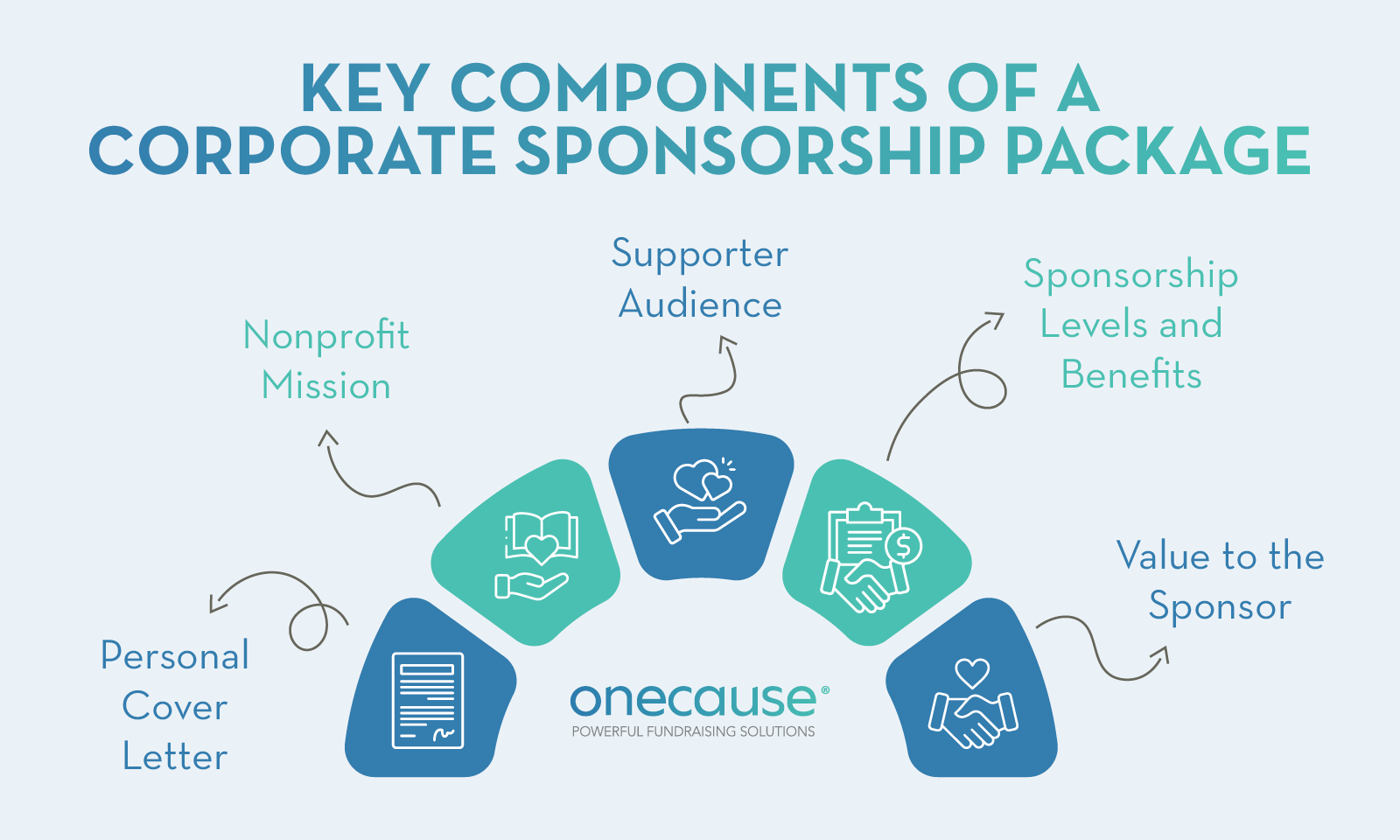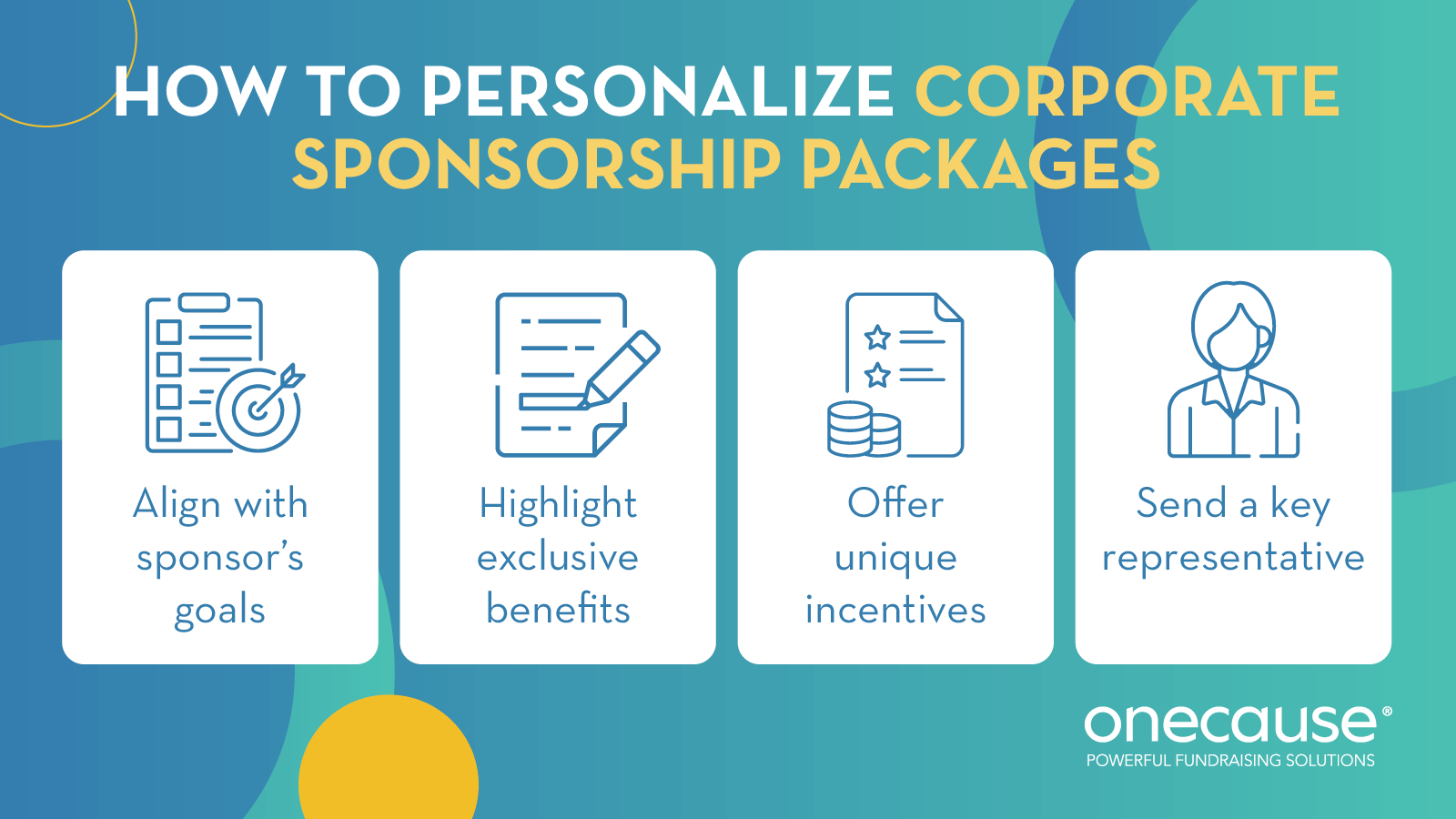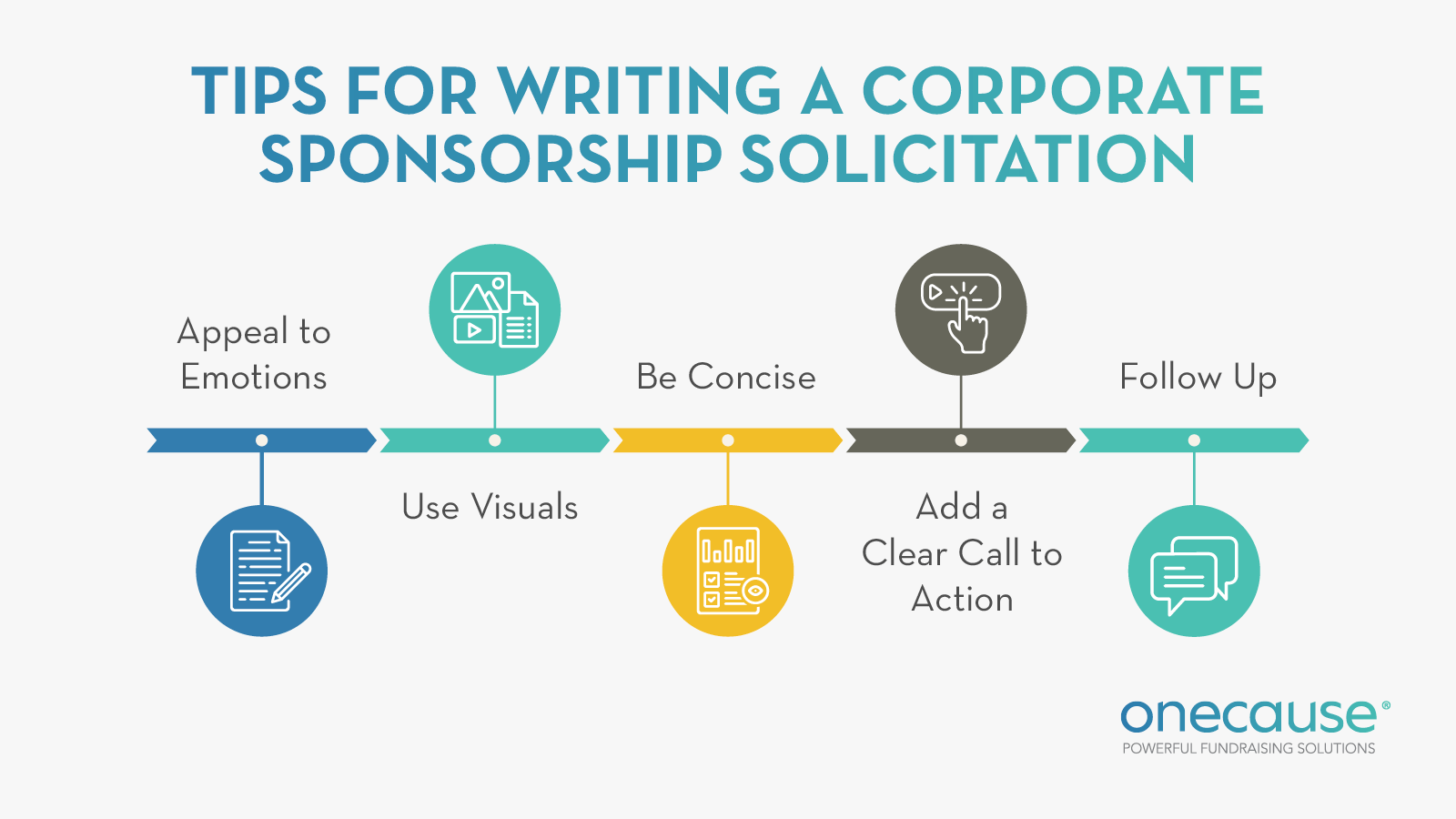A Guide to Creating Impactful Corporate Sponsorship Packages
Corporate sponsorships play a vital role in the nonprofit fundraising landscape. With the rise of corporate social responsibility (CSR), businesses are more eager than ever to support philanthropic efforts, corporate giving initiatives, and community service activities.
But with countless worthy causes out there, it’s up to nonprofits to stand out, engage effectively, and secure those sponsorships. This makes crafting the ideal corporate sponsorship package that much more important!
A winning sponsorship package is more than just a quick email to a local business. To grab the attention of decision-makers in corporate partnerships or community giving, your package needs to be thoughtful, engaging, and impactful enough to set your nonprofit apart.
In this guide, we’ll examine the following aspects of corporate sponsorship packages:
- What is a Corporate Sponsorship Package?
- What Should Be Included in a Corporate Sponsorship Package?
- How to Decide on Corporate Sponsorship Tiers
- How to Personalize Your Corporate Sponsorship Package
- How to Craft a Compelling Corporate Sponsorship Solicitation
- Examples of Corporate Sponsorship Packages
What is a Corporate Sponsorship Package?
A corporate sponsorship package is a comprehensive proposal that nonprofits send to potential corporate partners, offering them a chance to engage with and support your cause. These packages serve as a powerful tool that allows you to introduce your organization, highlight your mission, and showcase the meaningful ways a corporation can make a tangible impact on your work.
Beyond just presenting opportunities for collaboration, a well-crafted sponsorship package outlines the mutual benefits of the partnership. This includes detailing what the corporation will gain in return for their support—such as event tickets, co-branded promotional materials, advertising opportunities, public recognition, enhanced brand awareness, and a reputation boost through alignment with a worthy cause.
What Should Be Included in a Corporate Sponsorship Package?
A strong corporate sponsorship package should communicate your mission, demonstrate value, and inspire action. Key components include:
- A personal cover letter: Tailor your introduction to the recipient, referencing their company’s values or past philanthropic efforts.
- Your nonprofit’s mission: Provide a compelling summary of your organization’s purpose and the impact you’re making, supported by examples or data.
- Your supporter audience: Highlight donor demographics, event attendance, or social media reach to demonstrate the visibility and engagement opportunities available.
- Sponsorship levels and benefits: Outline tiered sponsorship options with specific benefits, such as logo placements, naming rights, or exclusive engagement opportunities.
- Value to the sponsor: Show how the sponsorship will benefit them tangibly (brand visibility, audience alignment) and intangibly (reputation boost, social impact).
Corporations receive countless sponsorship requests each year. To stand out, your package must emphasize why this partnership matters. Focus on the impact their support could have on your mission and their business. Make it known that they’re helping you change the world, and in return, you will provide value back to them.
How to Decide on Corporate Sponsorship Tiers
Establishing sponsorship tiers creates a structure that appeals to businesses of various sizes while offering incentives that feel valuable and fair at each level.
Lower entry-level tiers with modest donation amounts may be more appropriate for smaller, local businesses. Larger corporations, on the other hand, may be prepared to contribute more significant amounts in exchange for higher-value perks. By providing a range of sponsorship levels, you make it easier for businesses of all sizes to engage with your nonprofit in a way that fits their budget and goals.
Here’s an example of sponsorship tiers and the corresponding benefits sponsors might receive:
- Bronze ($1,000): Recognition in your event program and on your website.
- Silver ($5,000): All the perks from the previous tier, plus social media shout-outs and small logo placement on event materials.
- Gold ($10,000): All the perks from the previous tiers, plus medium logo placement, free tickets to the event, and verbal recognition during the event.
- Platinum ($15,000): All the perks from the previous tiers, plus large logo placement, a feature in your newsletter, and an invitation to a VIP networking opportunity.
- Diamond ($25,000): All the perks from the previous tiers, plus naming rights for a specific event element (e.g., a panel, session, or activity).
While it’s helpful to maintain consistent tiers for all sponsors, you can tailor what each tier includes based on the sponsor type or the event’s unique needs. For example, a tech company might value digital ad placement or an exclusive speaking opportunity, while a local business may prefer on-site signage or community engagement perks.
How to Personalize Your Corporate Sponsorship Package
Corporate sponsorships are unique. They involve significant investments and are built on the foundation of long-term, mutually beneficial relationships—not one-time contributions. To foster these connections, personalizing your outreach is key. Here’s how:
- Align with the sponsor’s goals: Research the company’s values and priorities, then tailor your proposal to show how their support advances their mission while helping your nonprofit.
- Highlight exclusive benefits: Showcase tailored perks like co-branded materials, exclusive event access, or naming rights that provide real value to the sponsor.
- Offer unique incentives: Include personalized opportunities, such as custom branding, VIP invitations, or participation in key nonprofit activities.
- Send a key representative: Have a senior leader or key stakeholder present your proposal to add credibility and build trust.
Personalization is the cornerstone of successful corporate sponsorships. By aligning with their goals and offering tailored benefits, you show sponsors they’re more than just donors—they’re collaborators in creating impact.
How to Craft a Compelling Corporate Sponsorship Solicitation
Corporate sponsorship letters remain one of the most effective tools for engaging potential business partners. These letters allow you to showcase your nonprofit’s mission, accomplishments, impact, and partnership opportunities.
Before writing your sponsorship letter, you need to research the organization you’re contacting. Take time to understand their history, their current philanthropic partnerships, the board, leadership team, and their mission. This will help you find commonalities between your cause and their business!
Keep these questions in mind when writing your corporate sponsorship letter:
- Why did you choose this corporation?
- What do they have in common with your nonprofit?
- What personal connections can you leverage?
- Who exactly will you be reaching out to about the sponsorship?
- What kind of sponsorship are you pitching?
Doing your research and knowing what you’re looking for before you start writing will help you better articulate your needs. As you begin writing, keep these tips in mind:
- Appeal to emotions: Share a powerful, relatable story that highlights your impact.
- Use visuals: Include a photo or infographic to make your mission tangible.
- Be concise: Keep the letter focused and easy to read.
- Add a clear call to action: End with a specific ask, like scheduling a meeting or reviewing your sponsorship packages.
- Follow up: Reach out promptly to reinforce your request and answer questions.
An essential element of the perfect corporate sponsorship letter is clearly demonstrating ROI. However, figuring out a way to articulate ROI can be challenging for many nonprofits, and corporate sponsors require more visibility into this metric than most of your other stakeholders.
With tools like the OneCause Fundraising Platform, providing value to your sponsors is easier than ever. From prominently displaying sponsor logos to fostering deeper engagement, OneCause helps you maximize visibility and involvement. Plus, robust analytics allow you to track impressions and deliver detailed reports that showcase the measurable impact of their sponsorship.
By effectively communicating ROI, you set the foundation for long-term collaboration because corporate sponsors can see the tangible benefits of supporting your cause.
Examples of Corporate Sponsorship Packages
Looking at real-world examples of corporate sponsorship packages can inspire your nonprofit and provide practical takeaways for crafting your own. Below, we explore three standout organizations and what makes their sponsorship materials effective.
Georgia Aquarium
The Georgia Aquarium is one of the largest aquariums in the world, dedicated to marine life conservation, education, and providing an unforgettable experience for visitors of all ages.
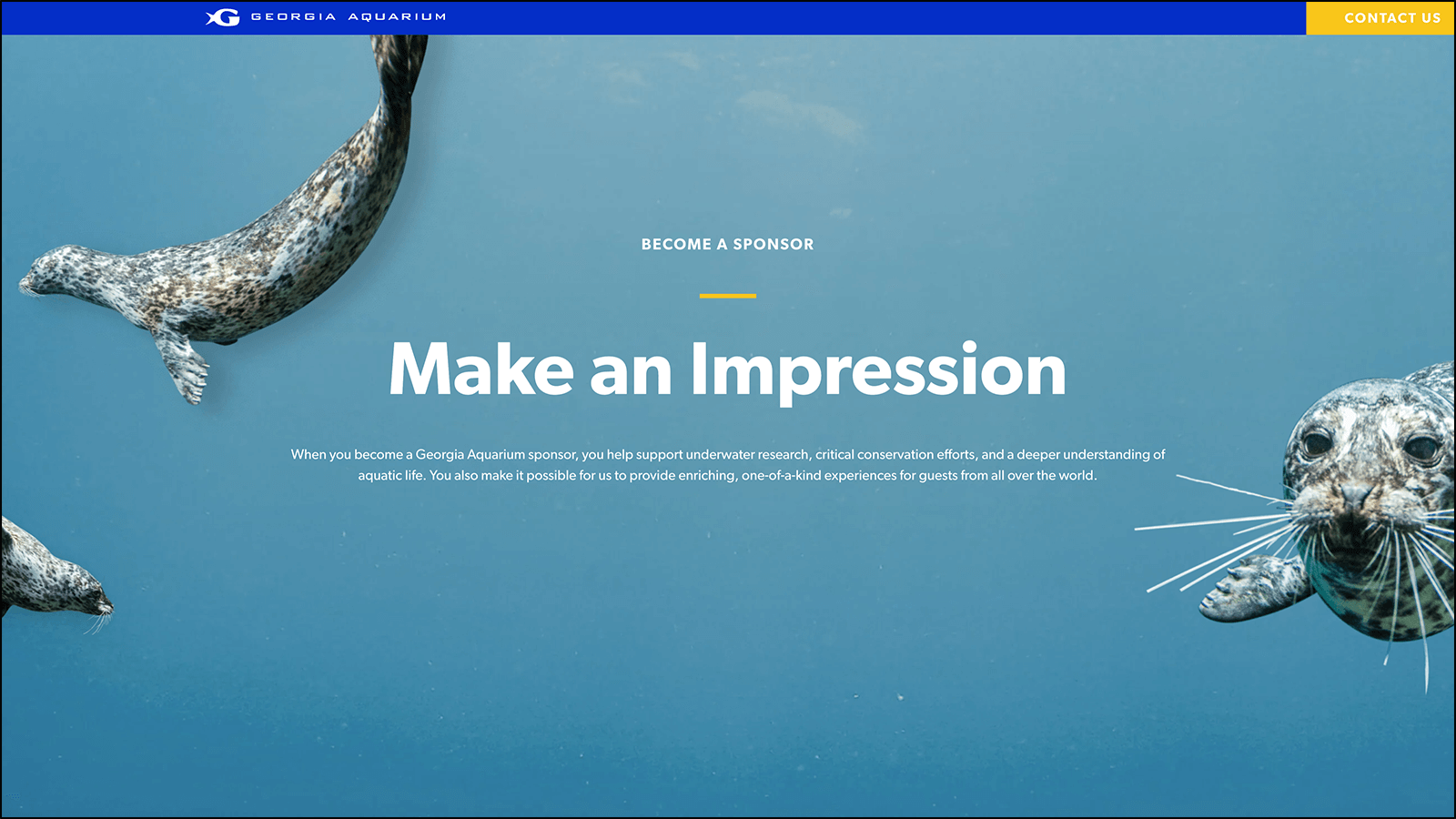
Here’s what stands out about this organization’s sponsorship page:
- Visually appealing design: The page features captivating, mission-driven images of marine life that connect potential sponsors with the organization’s purpose.
- Clear impact metrics: Statistics about the aquarium’s visitor count and audience engagement demonstrate the value of sponsoring to potential corporate partners.
- Sponsor visibility details: Information on how and where sponsor logos or details will be displayed helps corporations visualize their brand’s exposure to the aquarium’s community.
Key takeaway: Use visually compelling content and data to communicate your nonprofit’s reach and demonstrate tangible value to potential sponsors.
Museum of Modern Art
MoMA is one of the world’s leading modern art museums, dedicated to inspiring and educating through its vast collection of modern and contemporary art.
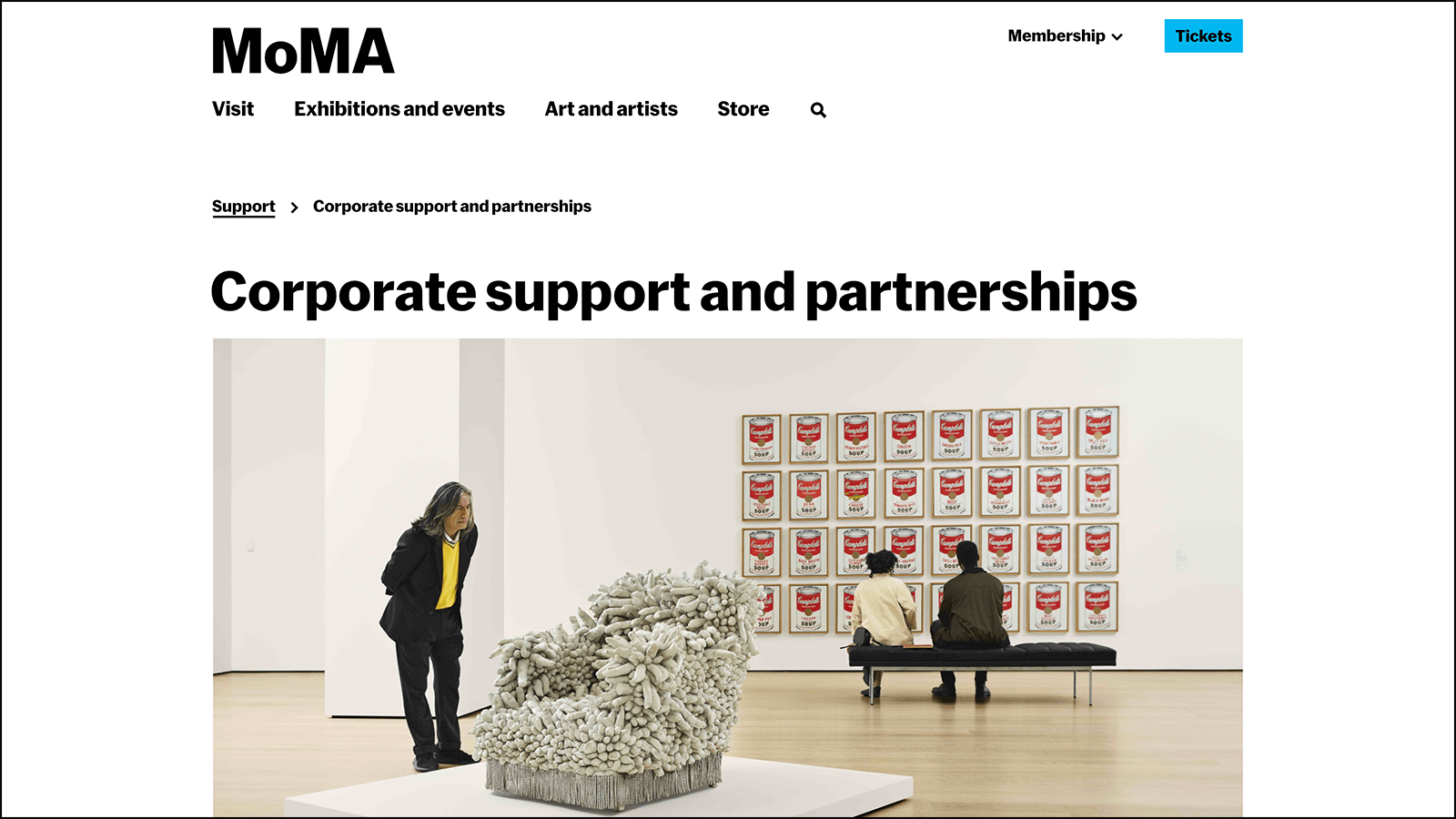
Here’s what stands out about this organization’s sponsorship page:
- Three distinct support options: The page outlines multiple ways for corporations to get involved—ranging from sponsorships to partnerships—making it accessible to companies with varying goals and budgets.
- Tailored partnerships: MoMA emphasizes its willingness to create custom collaborations to meet each sponsor’s unique objectives and needs.
- Showcasing prominent sponsors: The page features logos and details about their top sponsors, simultaneously showing gratitude and demonstrating sponsorship value to potential partners.
Key takeaway: Offer multiple levels of involvement and demonstrate flexibility in crafting mutually beneficial partnerships. Publicly celebrate existing sponsors to build credibility and attract new ones.
The Labelle Foundation
The Labelle Foundation is a Los Angeles-based nonprofit specializing in animal rescue, rehabilitation, and rehoming, with a particular focus on at-risk and medically challenged animals.
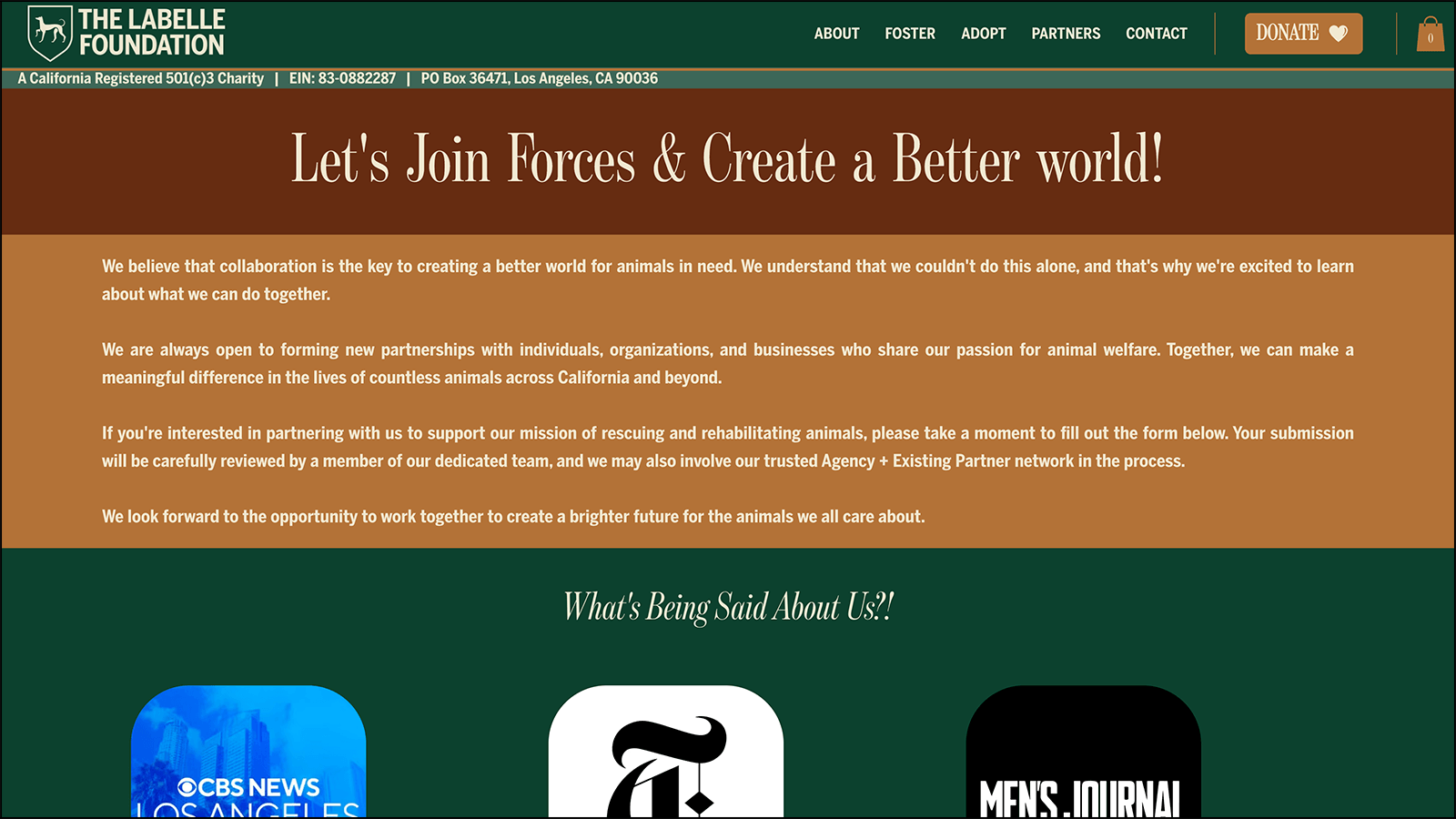
Here’s what stands out about this organization’s sponsorship page:
- Contextualized impact metrics: The foundation shares key statistics about its audience and social media reach, paired with an explanation of why those numbers matter to sponsors.
- Comprehensive media kit: Their sponsorship page links to a detailed media kit that highlights previous partnerships and provides insights into their audience demographics and engagement.
- Sponsor spotlights: The “Featured Sponsors” section includes brief descriptions of partner businesses, along with clickable buttons linking to their websites, fostering additional exposure.
Key takeaway: Pair key audience data with context to show its relevance and provide accessible materials like a media kit to streamline decision-making. Highlight your sponsors prominently to build credibility and strengthen partnerships.
These examples showcase how impactful sponsorship packages can be when designed thoughtfully. Whether it’s visually engaging content, detailed metrics, or public recognition of sponsors, each approach underscores the importance of aligning your nonprofit’s strengths with the needs of your corporate partners.
Send Out Your Corporate Sponsorship Packages
Corporate sponsorships are a powerful way to fuel your nonprofit’s mission while building lasting, mutually beneficial partnerships with businesses. By crafting tailored sponsorship packages, showcasing clear ROI, and drawing inspiration from successful examples, you can attract sponsors who share your vision and amplify your impact.
Want to learn more about corporate sponsorships and nonprofit best practices? Check out these resources:
- Corporate Sponsorships for Nonprofits | How to Boost Support. Explore a complete rundown of corporate sponsorships, including best practices for boosting support for your cause.
- 10 Nonprofit Fundraising Platforms to Inspire More Giving. Investing in the right fundraising platform doesn’t just let you acquire more donations—it also allows you to provide better value to your sponsors.
- How to Run a Silent Auction: The Step-by-Step Guide. Silent auctions are attractive events to sponsors. Discover how to run a stellar silent auction in this guide.

